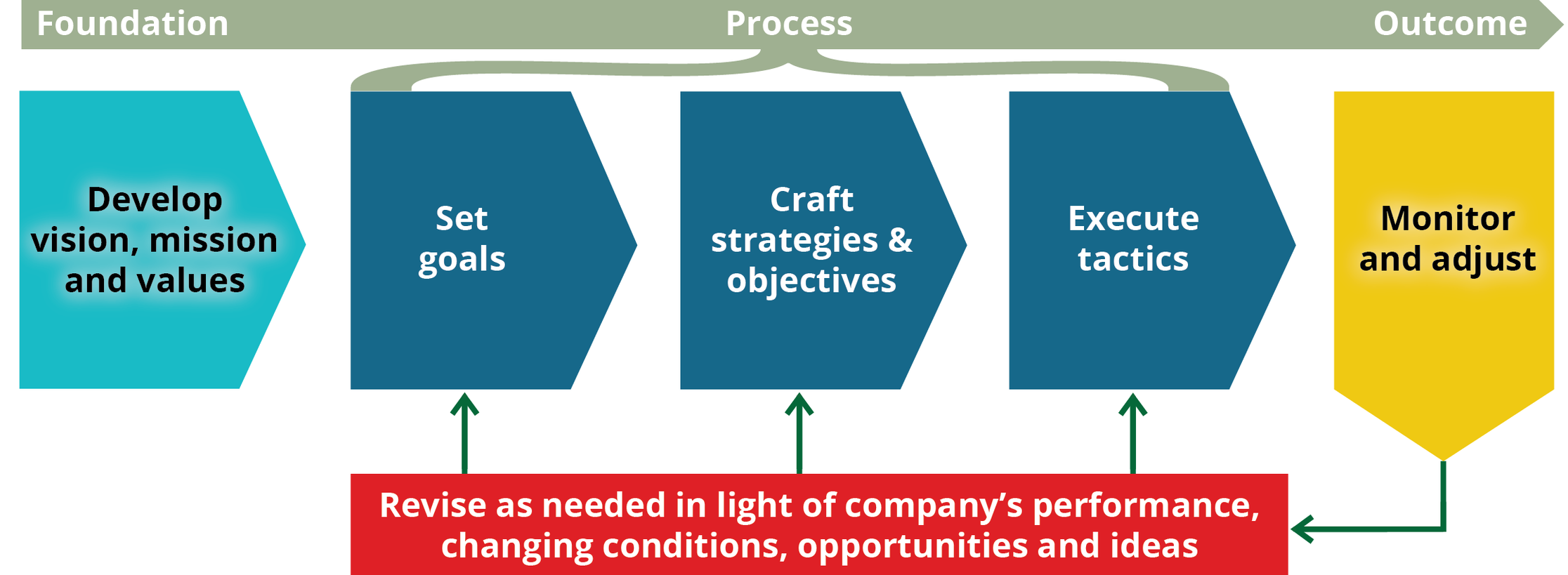Is Your Strategic Plan Strategic? Or Even A Plan?
How to avoid the top five mistake in your strategic planning process
“The best way to predict the future is to create it.” – Peter Drucker, Economist
Why is it that when a group of managers gets together for a strategic planning session they often emerge with a document that’s devoid of strategy, and often not even a plan?
Strategy, at its most basic level, is a set of choices and trade-offs about where an organization will invest, compete, and win. Planning is not a strategy-making exercise, and it is this author’s assertion that one cannot develop an effective plan before doing the hard work involved in crafting your strategy.
Most business managers and executives feel their organization would benefit from having a strategic plan. Small and medium businesses need a strategic plan to help attract capital investment by banks and investors; and larger, enterprise businesses need a plan to help satisfy regulators and harness the power of “business alignment” among divisions and teams.
With so much agreement on the need for strategic planning, why then do so many plans fail to be vital documents for their organizations? Why do executive teams groan about it being “that time of year again?” And why do managers read company strategic plans only to toss them on the shelf as unhelpful sheaves of paper?
The answer lies within the top five mistakes executive teams fall victim to:
- They treat strategic planning as a once a year task; a checkbox on the to-do list.
- Writing the strategic plan is delegated to a single executive, often the CFO, whose comfort zone centers on measuring, projecting, and calculating.
- Executive teams pay only “lip service” to the foundational elements of vision, mission, and values.
- They fail to initiate processes which make the strategic plan a “living document” that is constantly being monitored and adjusted.
- The biggest mistake of all: failure to embrace the fear and discomfort involved in effective strategy-making.
“Fear and discomfort are key to effective strategy-making.”
Strategic planning is a scary process because it forces executive teams to confront a future about which they can only guess. Further, executives involved in the process may fear that making the wrong strategic decision will limit or cut off other possibilities; and that getting it wrong will be a career-limiting decision.
What is the natural reaction to the fear and discomfort of this strategy-making challenge? Simple: they make the challenge less daunting by turning it into a problem that can be “solved.”
When strategy-making is short-circuited by making it something that can be “solved,” executive teams often create comprehensive plans for how they will invest in new or existing assets. These investments will allow the firm to achieve a target; for example, increasing the company’s market share, or enter a new market. Projections of costs and revenue are calculated and by the end of the “strategic planning process” everyone involved feels much less scared about their future.
A Terrible Investment
Such a process is a terrible investment of time and resources. If you and your executive team are comfortable with your strategy, it’s likely not a very good one. True strategic planning is about confronting your fear of the unknown, making hard choices, and placing your bets. The objective is to increase the odds of success – not to eliminate risk.
Therefore, a strategic plan should answer three foundational questions:
- Who the company will serve and who they won’t;
- What capabilities they will be disproportionately better at than competitors;
- Why their target customers would choose them over competitors.
A process for helping organizations arrive at answers to these questions has five parts, as shown below:

Please note that none of these stages to strategic decision-making involve projections of revenue or costs. Why?
- Costs are predictable and completely under company control. Business plans may institute controls that managers may measure, calculate, and project. And that is why costs are never part of strategic decision-making. Cost-planning is a trap that prevents effective strategic decision-making.
- Revenue is never under the company’s control. Revenue is decided by your customers and no amount of planning will change that or make revenue magically appear. Revenue projections, too, therefore are never part of strategic decision-making.
“The goal of the strategist in the strategic decision-making process is singular: to find ways to acquire and keep customers.”
So how does one go about creating an effective strategic plan? A good start would be to separate the words “strategic” and “plan” and treat them as separate documents.
- The strategy document summarizes a decision-making process that deals with the future and uncomfortable unknowns involved in creating value-propositions to attract and retain customers.
- The business plan identifies, calculates, and projects costs that are under the company’s control. Ideally, it is based upon carrying out the strategies and vision identified in the strategy document.
A Better Path Forward
For help with creating or evaluating your strategy document, watch for my next installment about the foundational elements of strategic decision-making: the vision, mission, and values statements.
About the author: David Eldred is the President and Chief Brand Technologist of Sine Cera Marketing, a boutique marketing consulting practice based in Sherwood, Oregon. Sine Cera specializes in helping businesses create and maximize their digital presence – as well as offering a full range of marketing consulting services, including social media marketing, social selling, search engine marketing, website design, and mobile marketing solutions.




